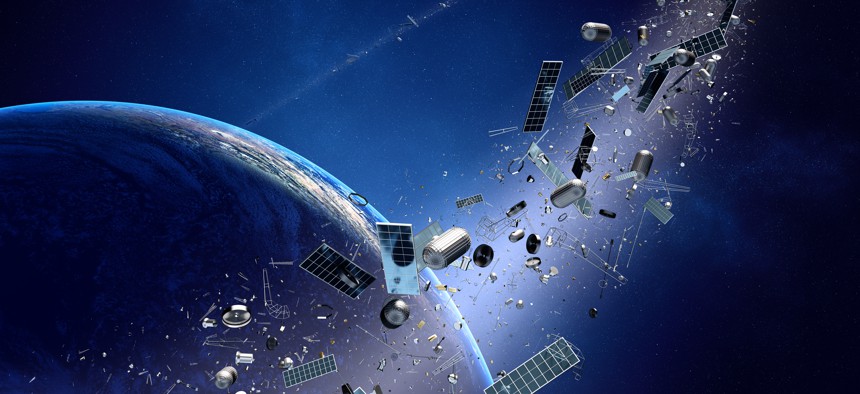
johan63/Getty Images
Space Force hunts for mature technology in 'Hyperspace Challenge’ program
Expanding its reach from startups to established players, this year's event seeks satellites that are more autonomous, maneuverable, and safer from debris.
The Space Force's Rapid Capabilities Office is working with the Hyperspace Challenge accelerator to identify companies with mature space technology of potential use to the Space Force and the rest of the Defense Department.
The partnership is a first for the six-year-old business accelerator, which had previously focused on helping innovative startups win U.S. government contracts in the growing space domain.
This year's iteration of the accelerator's three-month program aims to develop products to increase space visibility to reduce the risks posed by objects in orbit, advancing space vehicle autonomy to reduce ground-operator workload, and increasing the lifespan and maneuverability of space-based vehicles.
The program—a partnership between the Air Force Research Laboratory, Space Force RCO, the economic development arm of Central New Mexico Community College and the New Mexico Institute of Mining and Technology—culminates with an in-person event to be held Nov. 1-3, 2023, at Q-Station in Albuquerque, New Mexico.
“Hyperspace is always looking for ways to grow,” Lauren Hunt, AFRL deputy program manager for the Space Force Accelerators Program, said in a statement. “Our goal is to really deepen connections and relationships among different communities. Every year we try to bring together a diverse group of communities who have different perspectives and concepts, so we can seek out the most innovative ideas. We look at viewpoints we haven't considered before.”
According to Matt Fetrow, Space Force RCO communication director, the program specifically seeks companies and organizations that have “mature products and services or technologies” in Space Force RCO’s interest areas. Those areas include increasing space visibility and awareness, advancing space analysis and vehicle autonomy and increasing the lifespan and maneuverability of such vehicles.
NEXT STORY: Army moves ahead on Ukraine-style bomber drones



